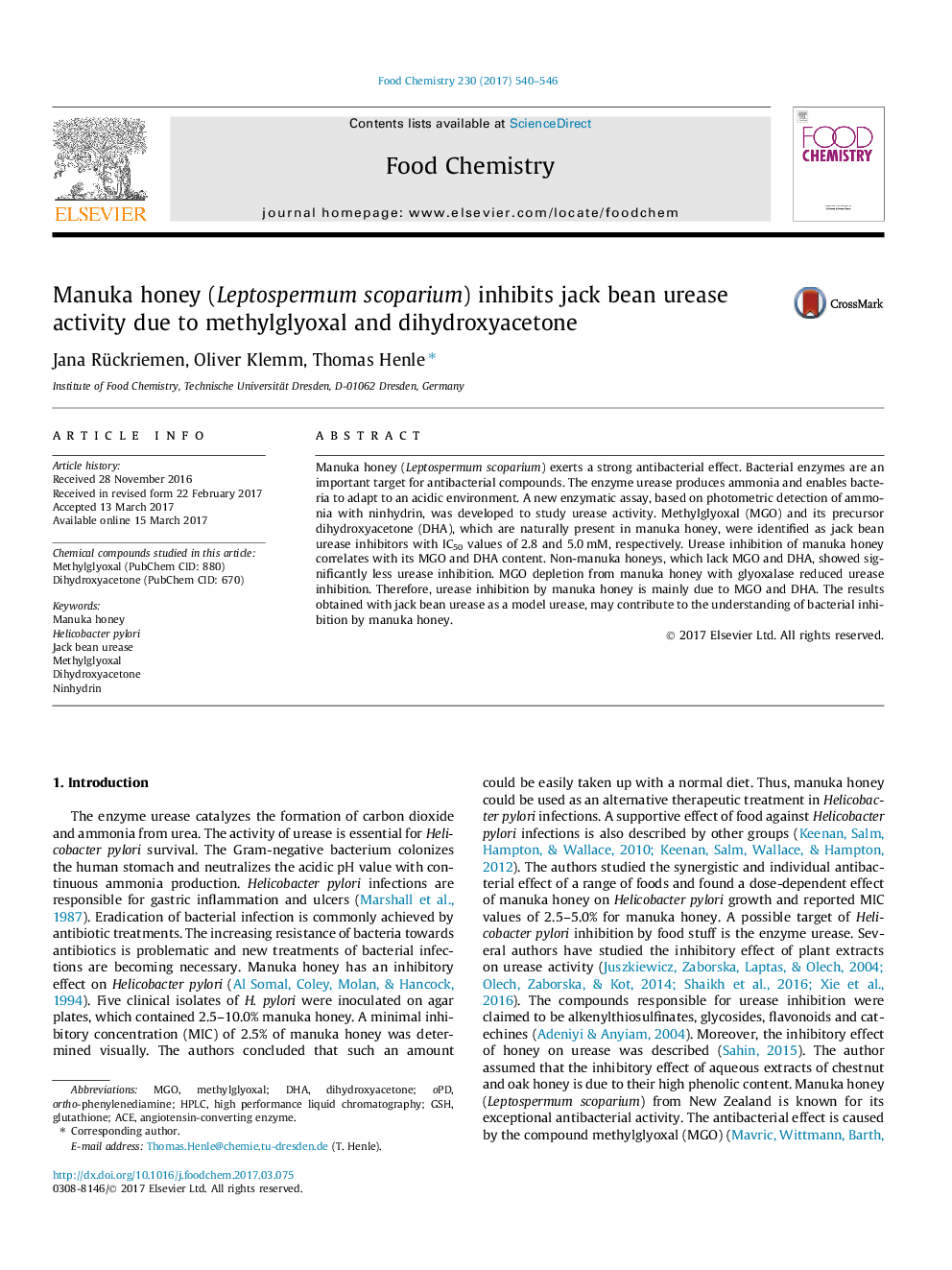| کد مقاله | کد نشریه | سال انتشار | مقاله انگلیسی | نسخه تمام متن |
|---|---|---|---|---|
| 5133225 | 1492062 | 2017 | 7 صفحه PDF | دانلود رایگان |

- Development of a new enzymatic assay to study urease activity.
- Jack bean urease serves as a model urease for inhibitory studies.
- Methylglyoxal (MGO) and dihydroxyacetone (DHA) inhibit urease dose-dependently.
- Manuka honeys show stronger urease inhibition than non-manuka honeys, depending on content of MGO and DHA.
- Manuka honey might serve as functional food in antibacterial treatments.
Manuka honey (Leptospermum scoparium) exerts a strong antibacterial effect. Bacterial enzymes are an important target for antibacterial compounds. The enzyme urease produces ammonia and enables bacteria to adapt to an acidic environment. A new enzymatic assay, based on photometric detection of ammonia with ninhydrin, was developed to study urease activity. Methylglyoxal (MGO) and its precursor dihydroxyacetone (DHA), which are naturally present in manuka honey, were identified as jack bean urease inhibitors with IC50 values of 2.8 and 5.0Â mM, respectively. Urease inhibition of manuka honey correlates with its MGO and DHA content. Non-manuka honeys, which lack MGO and DHA, showed significantly less urease inhibition. MGO depletion from manuka honey with glyoxalase reduced urease inhibition. Therefore, urease inhibition by manuka honey is mainly due to MGO and DHA. The results obtained with jack bean urease as a model urease, may contribute to the understanding of bacterial inhibition by manuka honey.
Journal: Food Chemistry - Volume 230, 1 September 2017, Pages 540-546